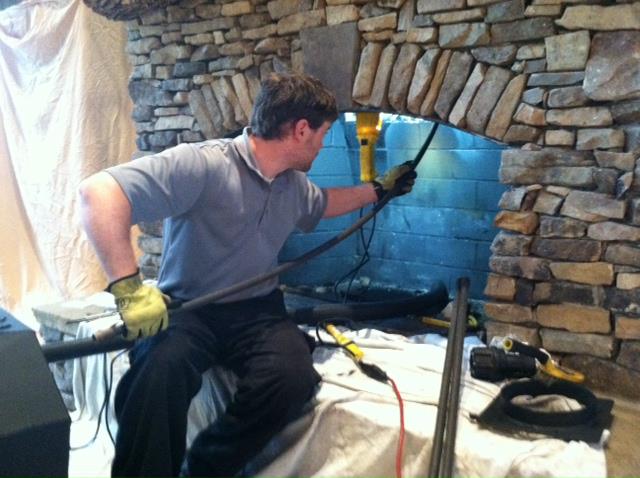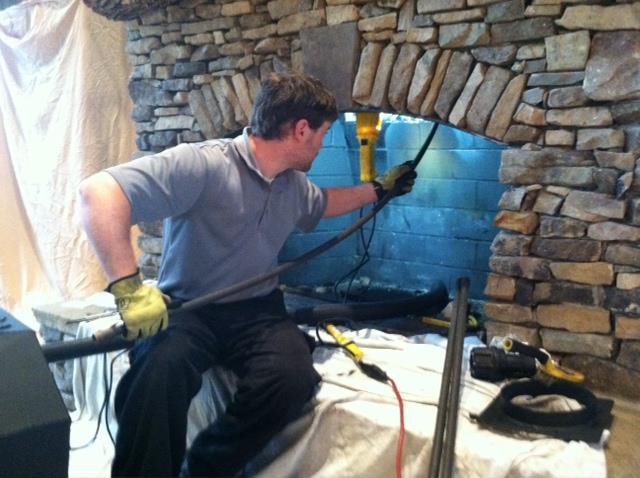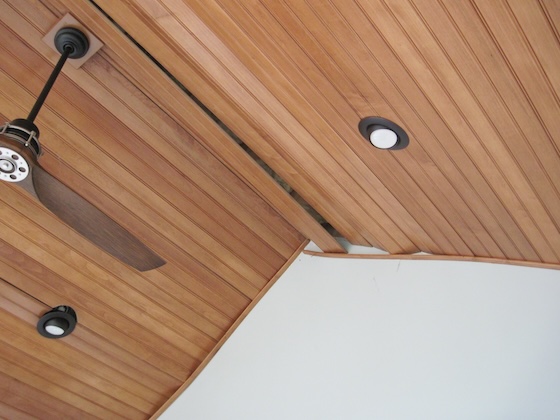
Why Chimney Cleaning is Important for Safety and Efficiency
Ensuring the safety and efficiency of your chimney is crucial for maintaining a healthy and functional home. Not only does regular chimney cleaning help to prevent potential fire hazards, but it also allows for optimal airflow and improved energy efficiency. Over time, soot, debris, and creosote can accumulate within the chimney flue, obstructing the passage of smoke and causing it to potentially backdraft into your living space. This buildup increases the risk of chimney fires, which can lead to extensive damage to your property and endanger the lives of those within. By regularly cleaning your chimney, you can eliminate these risks and create a safer environment for you and your family.
In addition to enhancing safety, chimney cleaning also contributes to the overall efficiency of your heating system. When creosote and debris accumulate within the chimney, it restricts the airflow and ventilation, causing the fireplace or wood-burning stove to operate less efficiently. This can result in decreased heat output, increased fuel consumption, and even the emission of harmful gases, such as carbon monoxide. By keeping your chimney clean and clear, you can ensure that your heating system operates at its full potential, providing you with a cozy and comfortable environment while minimizing energy wastage. Prioritizing regular chimney cleanings is the key to maintaining a safe and efficient home heating system.
Signs that Your Chimney Needs Cleaning
Creosote buildup is one of the most common signs that your chimney needs cleaning. Creosote is a black, sticky substance that forms when wood or coal burns. Over time, it can accumulate on the walls of your chimney, obstructing the flow of smoke and increasing the risk of a chimney fire. If you notice a strong, smoky odor coming from your fireplace or see a thick, black residue inside your chimney, it is a clear indication that it needs a thorough cleaning.
Another sign that your chimney needs cleaning is the presence of blockages or obstructions. Small animals, such as birds or squirrels, may build nests inside your chimney during the warmer months. These nests can restrict airflow and create a potential fire hazard. Additionally, leaves, twigs, and other debris can get stuck in the chimney, leading to poor ventilation and increasing the risk of smoke backing up into your home. If you notice any unusual sounds or see debris coming out of your chimney, it is advisable to have it cleaned promptly.

Understanding the Different Types of Chimney Cleaning Methods
There are several different methods that can be used to clean a chimney, each with its own advantages and disadvantages. One common method is sweep cleaning, which involves using a brush or rod to remove soot and debris from the chimney walls. This method is effective at removing buildup and ensuring proper airflow, but it can be time-consuming and may require professional assistance.
Another method is chemical cleaning, which involves using a chemical solution to break down creosote and other deposits in the chimney. This method is convenient and can be done without the need for specialized equipment. However, it may not be as thorough as sweep cleaning and may not be suitable for all types of chimneys.
One newer method is rotary cleaning, which uses a rotating brush to clean the chimney walls. This method is highly effective at removing stubborn deposits and can be done relatively quickly. However, it requires specialized equipment and may not be suitable for older or more fragile chimneys.
It is important to understand the different types of chimney cleaning methods in order to determine which one is most appropriate for your specific chimney. By choosing the right method and properly maintaining your chimney, you can ensure its safety and efficiency for years to come.
Step-by-Step Guide to Cleaning Your Chimney
To ensure the safety and efficiency of your chimney, regular cleaning is essential. Here is a step-by-step guide to help you clean your chimney effectively.
Firstly, gather all the necessary tools and equipment. You will need a chimney brush, chimney rods, a ladder, a vacuum cleaner with a HEPA filter, protective gear such as gloves and goggles, and a tarp or drop cloth to protect your floor from debris.
Next, make sure the fireplace is completely cold. Remove any ashes and open all windows in the room to ensure proper ventilation. Cover the fireplace opening with the drop cloth or tarp to prevent soot and debris from spreading.
Now, it’s time to get on the roof. Set up your ladder securely and bring along the chimney brush and rods. The brush should be the appropriate size for your chimney, as different chimneys may require different brush sizes. Attach the rods to the brush and slowly insert them into the chimney, pushing the brush up and down to dislodge any creosote buildup. Work your way down the entire length of the chimney until no more debris is coming out.
Once you have completed the brushing process, go back inside and use the vacuum cleaner with the HEPA filter to clean up any loose dust and soot. Be sure to vacuum the fireplace as well as the surrounding area.
Finally, inspect the chimney for any signs of damage, such as cracks or loose mortar. If you notice any issues, it’s important to consult a professional chimney sweep for further assessment and repairs.
Cleaning your chimney might seem like a daunting task, but by following this step-by-step guide and taking necessary precautions, you can ensure a safe and efficient chimney for your home.
Tools and Equipment Needed for Chimney Cleaning
Chimney cleaning is an essential task that ensures the safety and efficiency of your fireplace. To properly clean your chimney, you will need several tools and equipment. One of the most important tools is a chimney brush. These brushes come in various sizes and are specifically designed to fit different types of chimneys. Additionally, you will need a chimney rod or a flexible cleaning rod, which helps in reaching the entire length of the chimney. These rods are typically made of durable materials such as fiberglass or polypropylene, ensuring they can withstand the rigors of chimney cleaning.
In addition to a chimney brush and rod, you will also need a vacuum cleaner with a long hose attachment. This will help in removing the dislodged soot and debris from the chimney. It is essential to choose a vacuum cleaner with a high-efficiency particulate air (HEPA) filter to prevent the soot from circulating in your home. Other tools that might be required include a drop cloth or tarp to protect the surrounding area from dirt and a sturdy ladder to safely access the roof. By having these necessary tools and equipment, you will be well-equipped to clean your chimney effectively.
The Ultimate Guide to Year-Round Chimney Cleaning was first seen on https://chimneysweeplosangeles.net/





More Stories
The Role of Chimney Inspections in Homebuying
The Rise of Bed Bugs: Why Are They Making a Comeback?
Chimney Masonry Repair 101: Restoring Beauty and Functionality